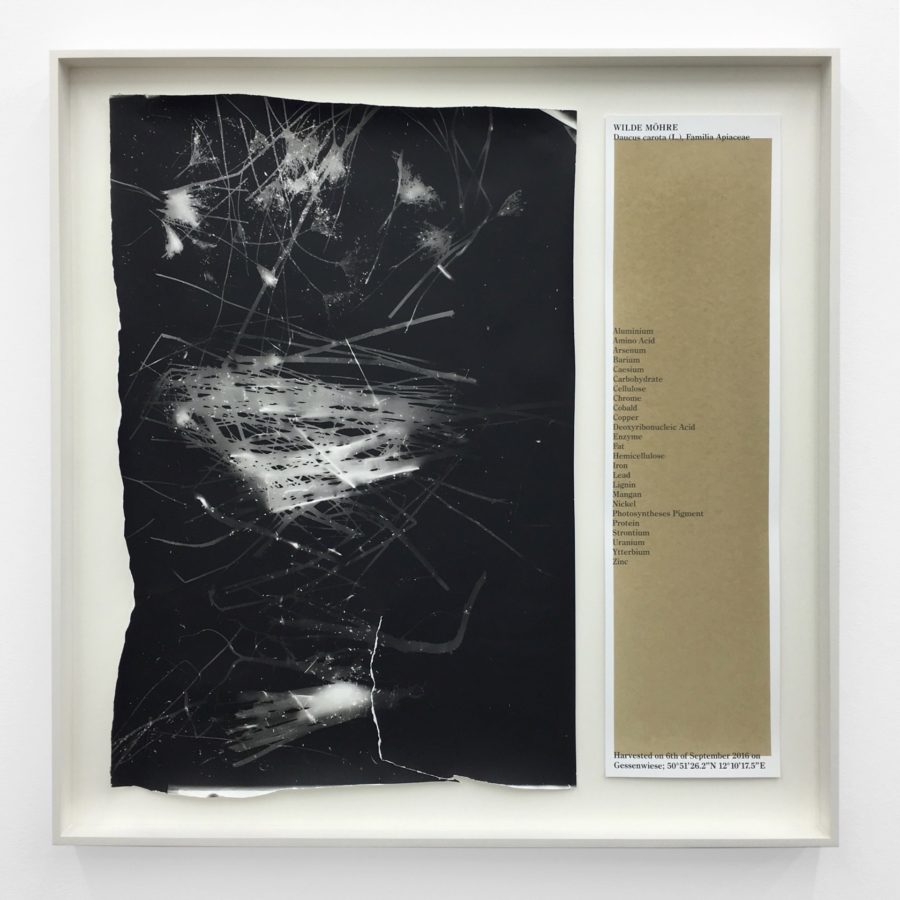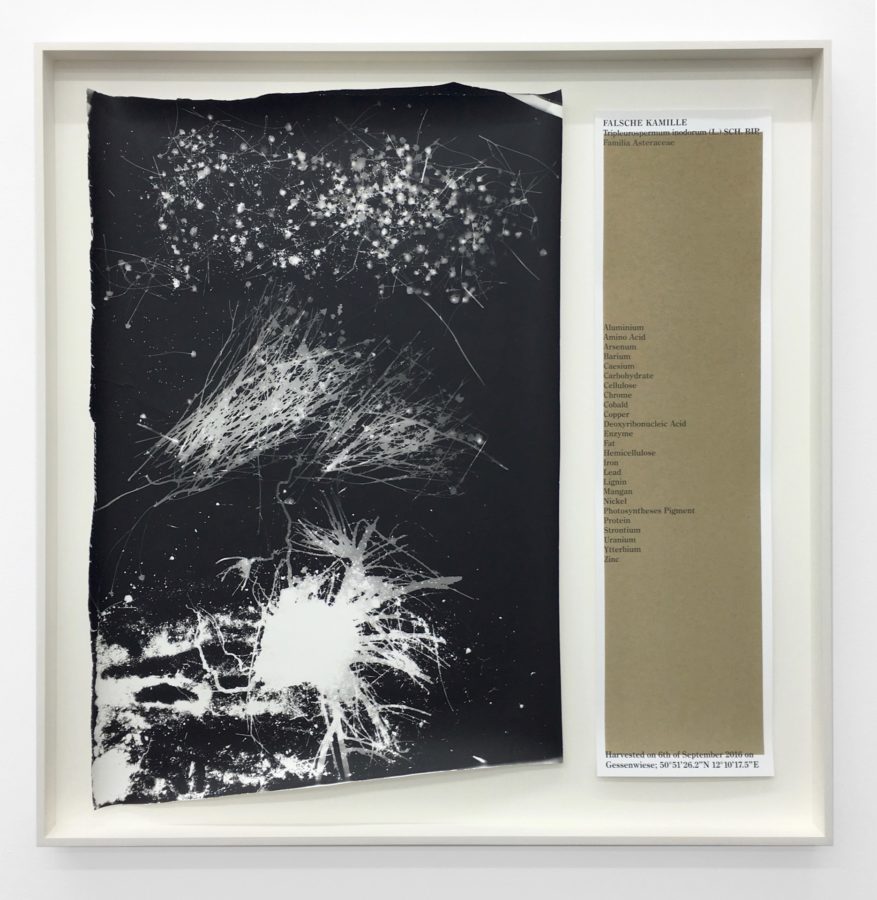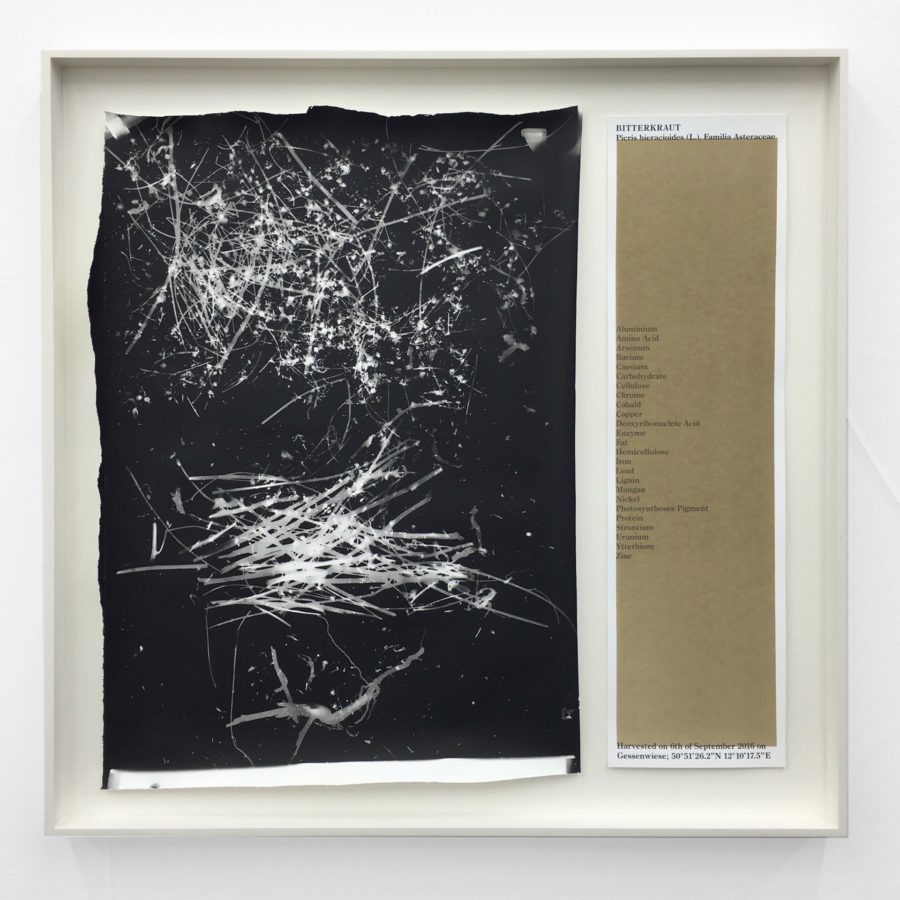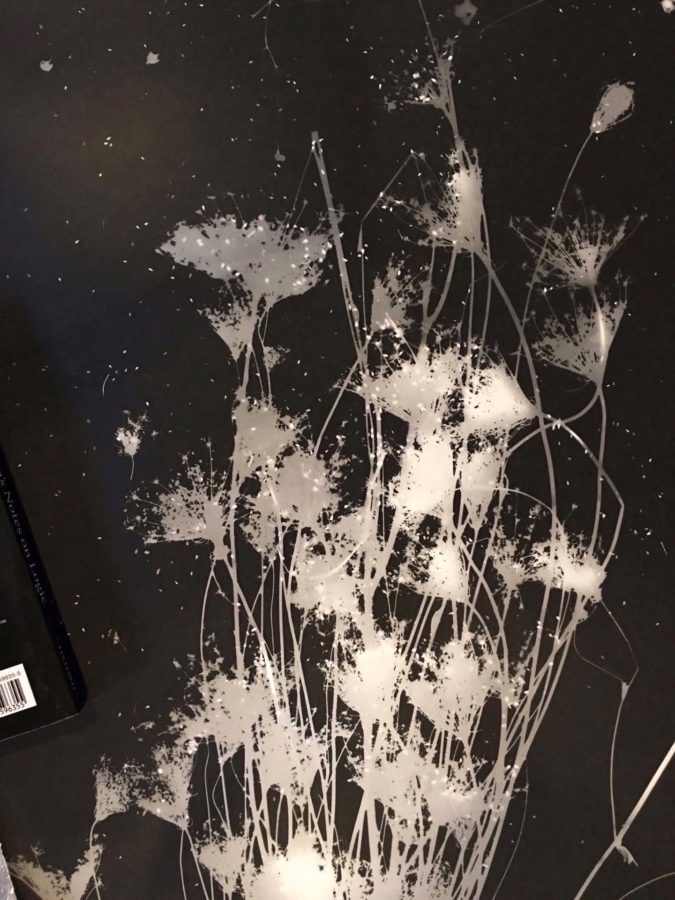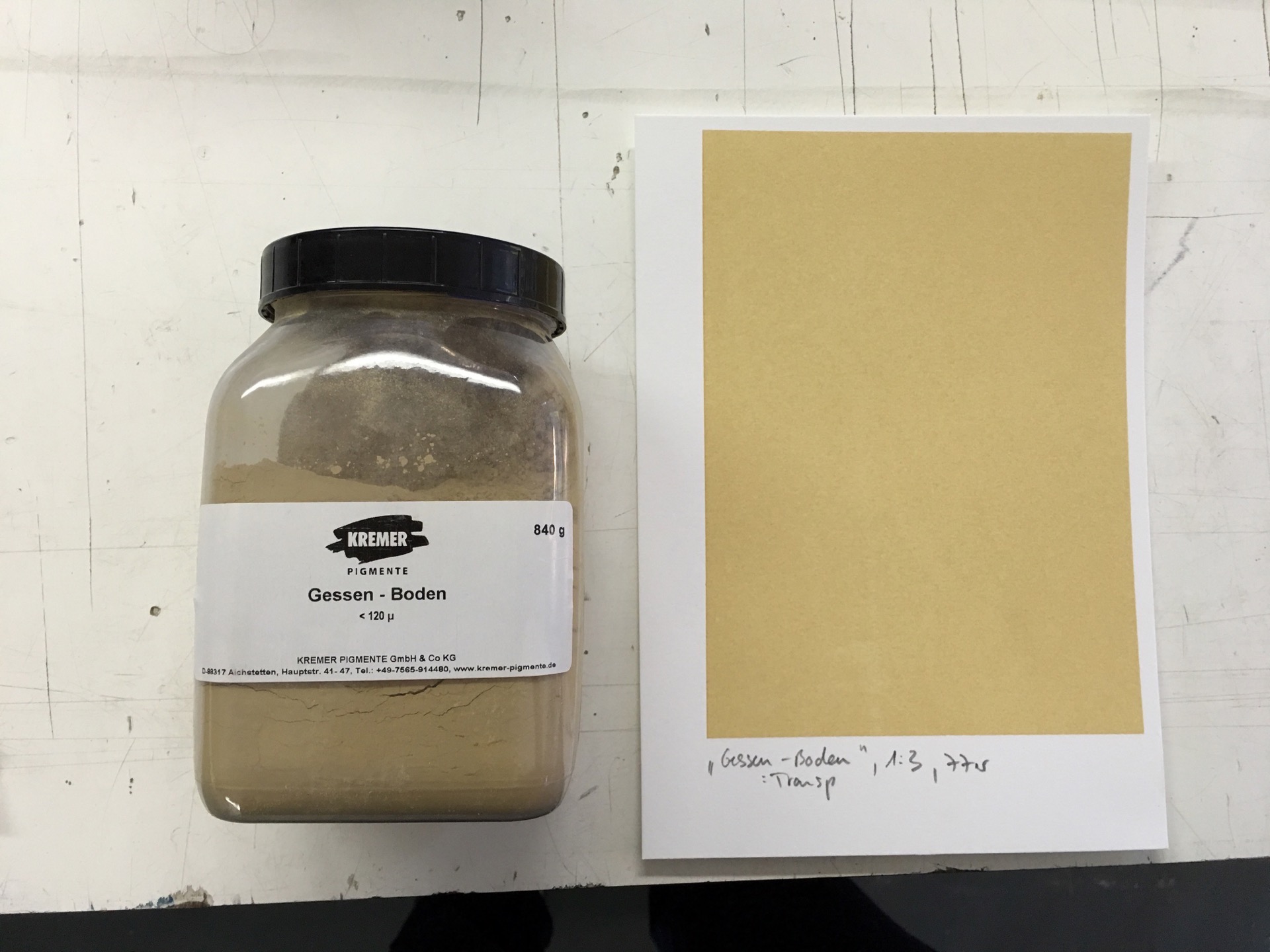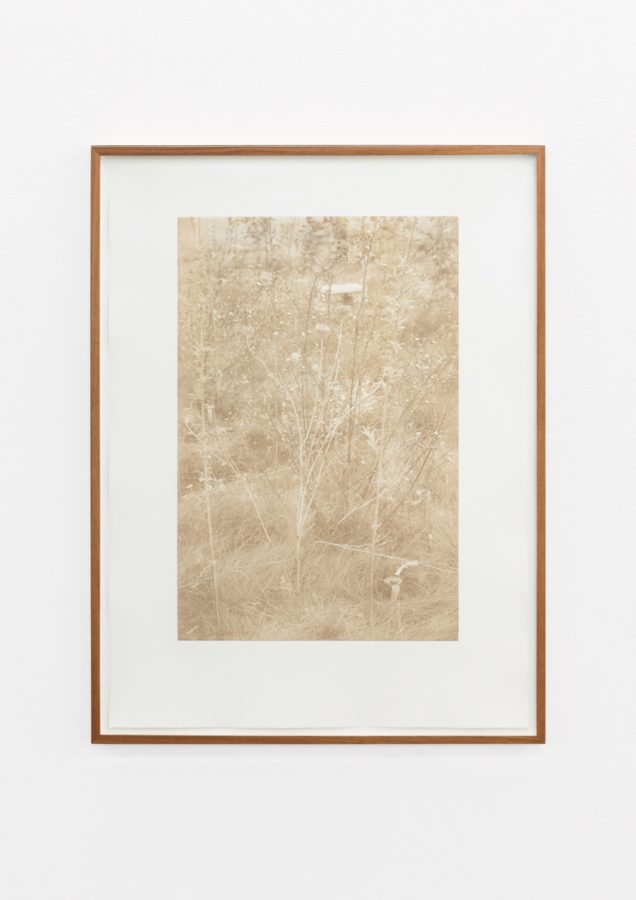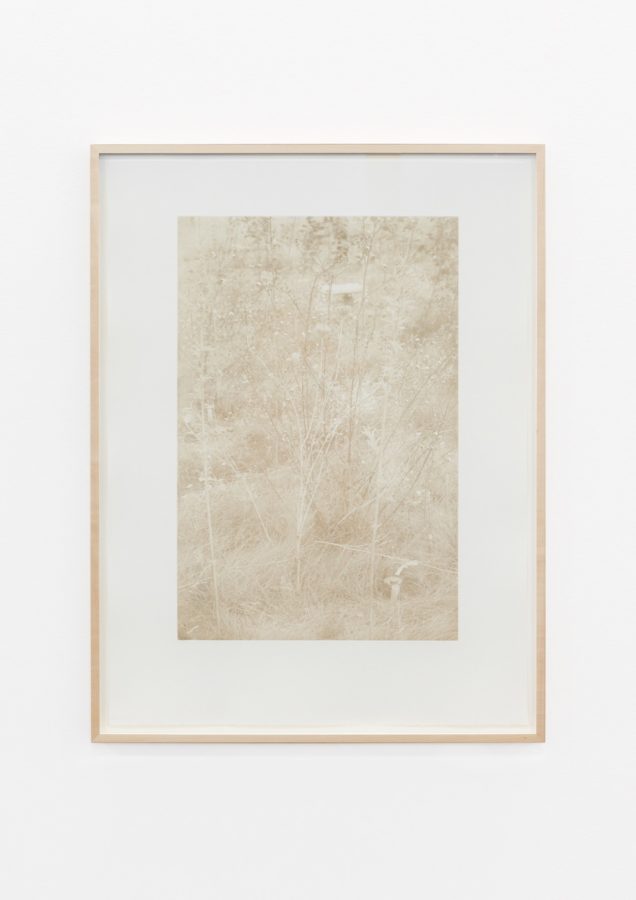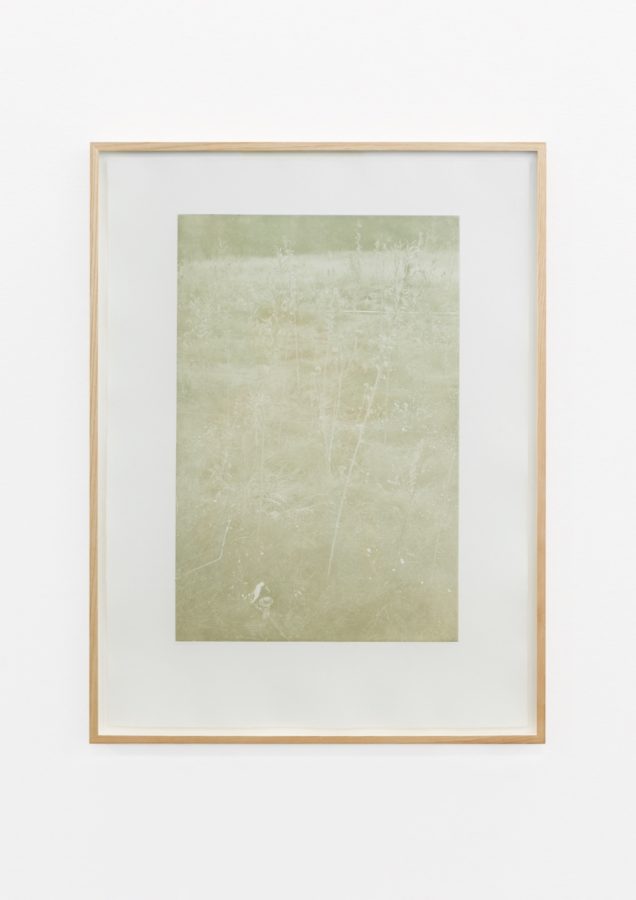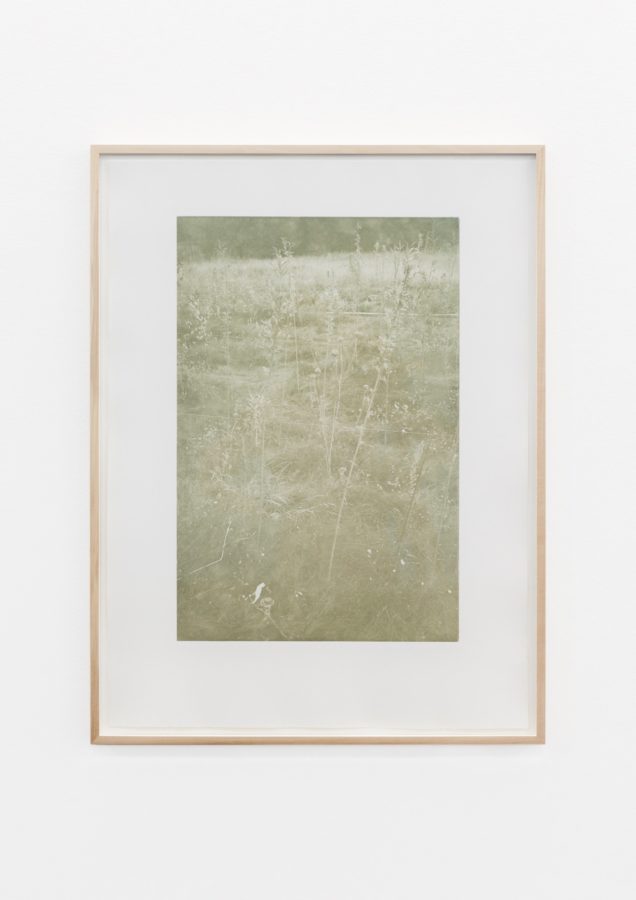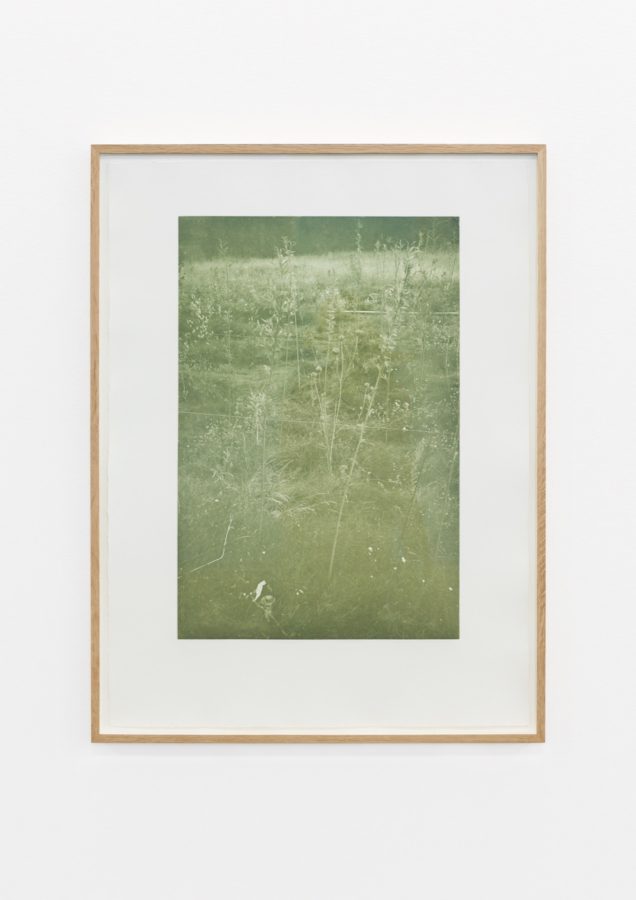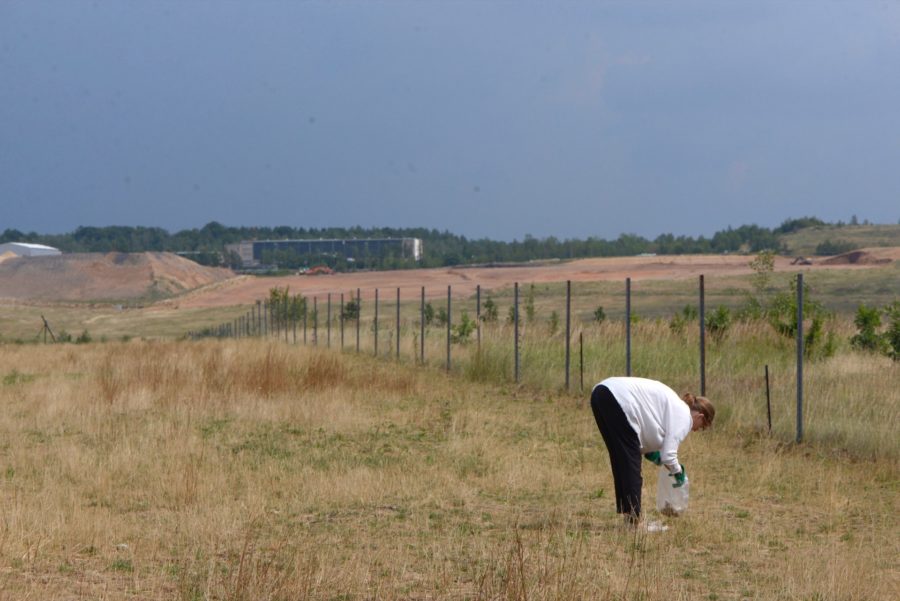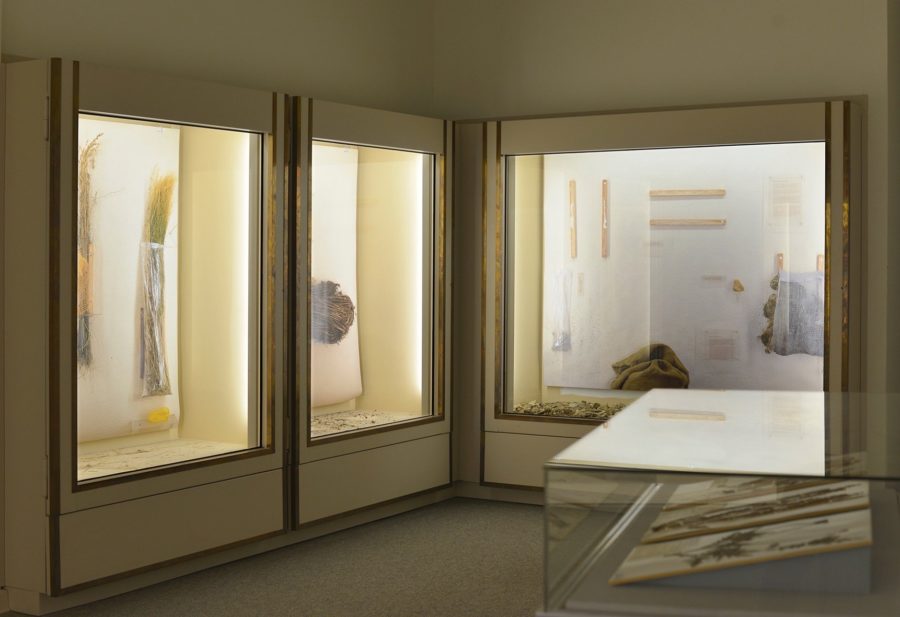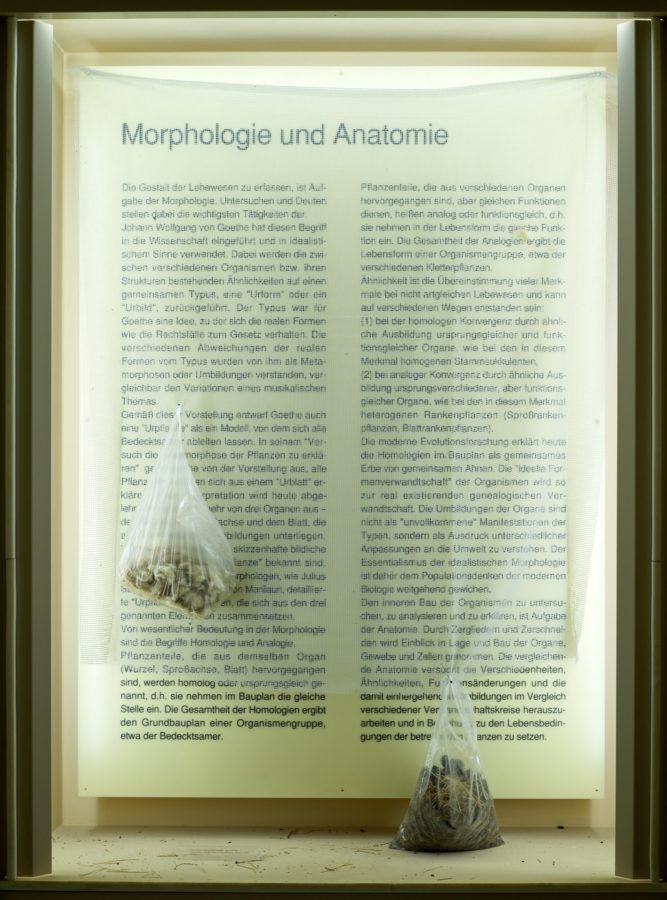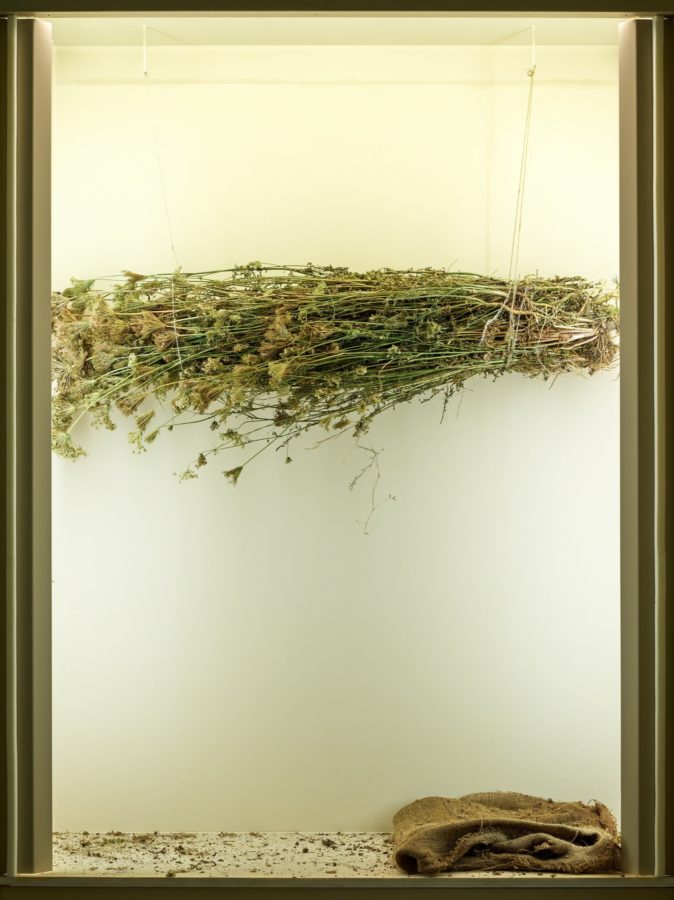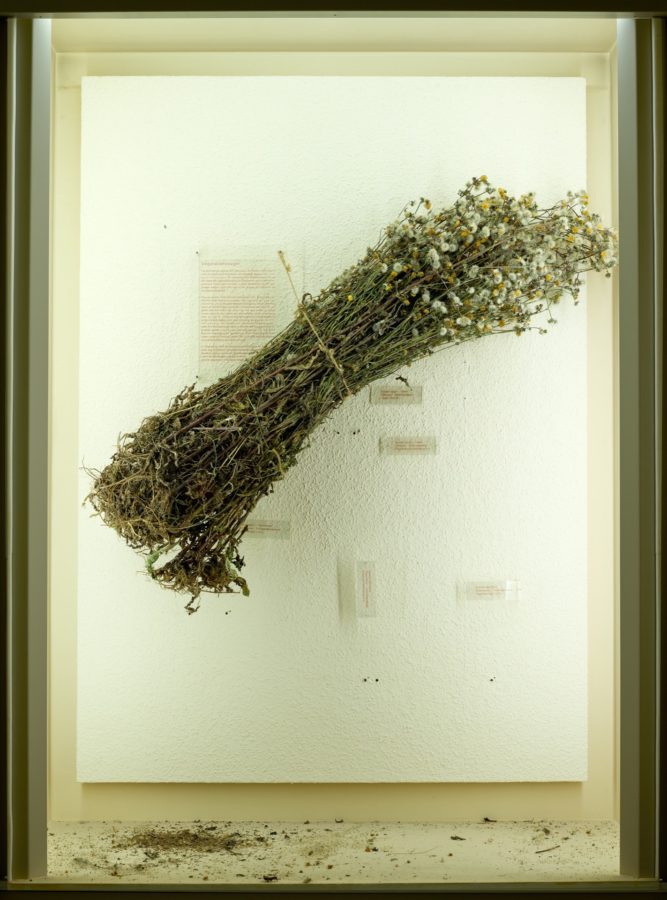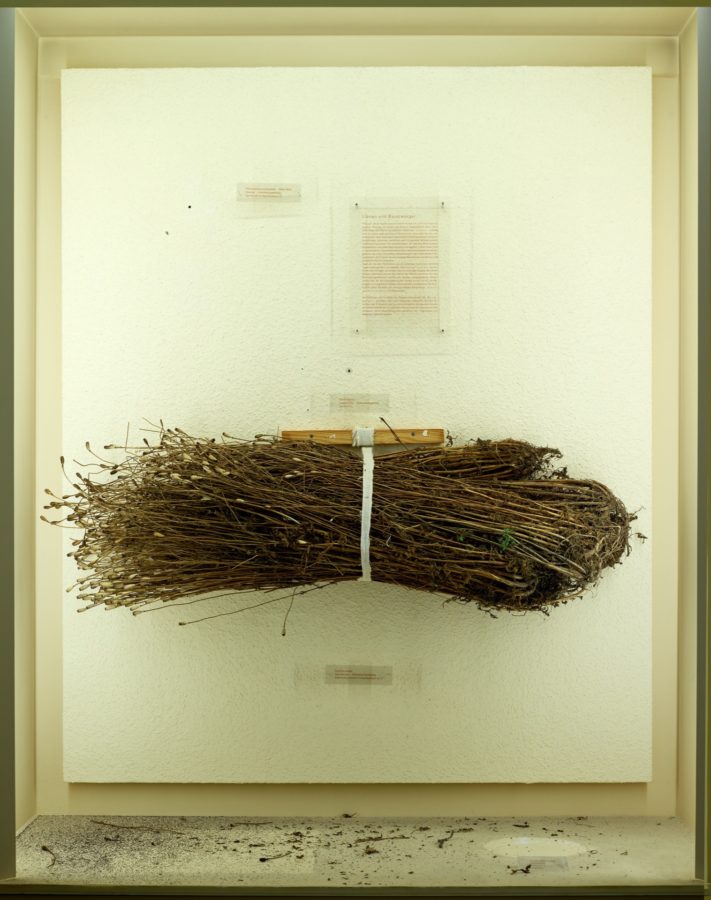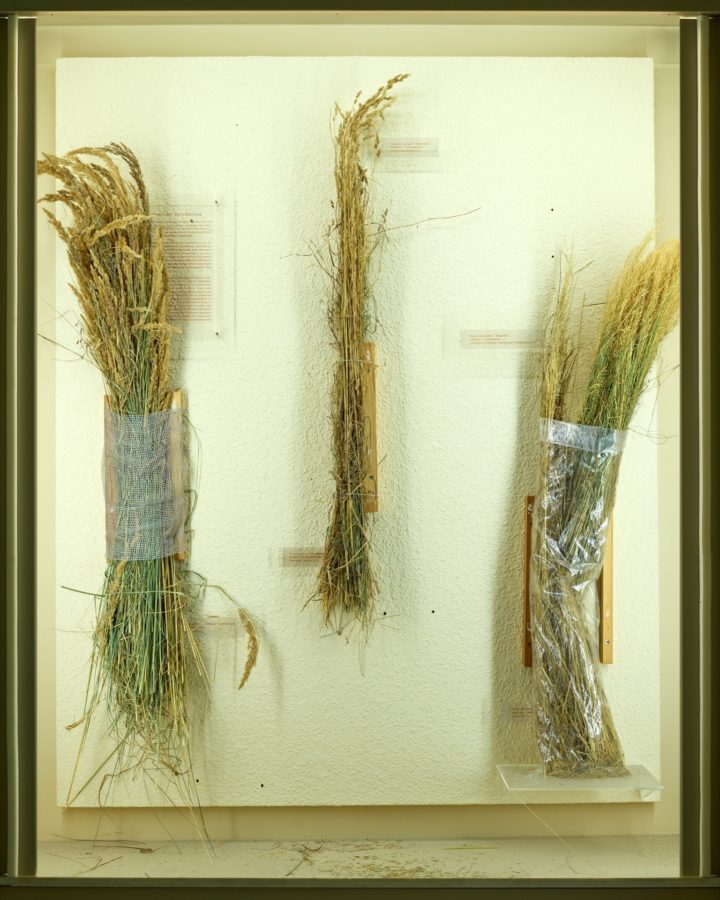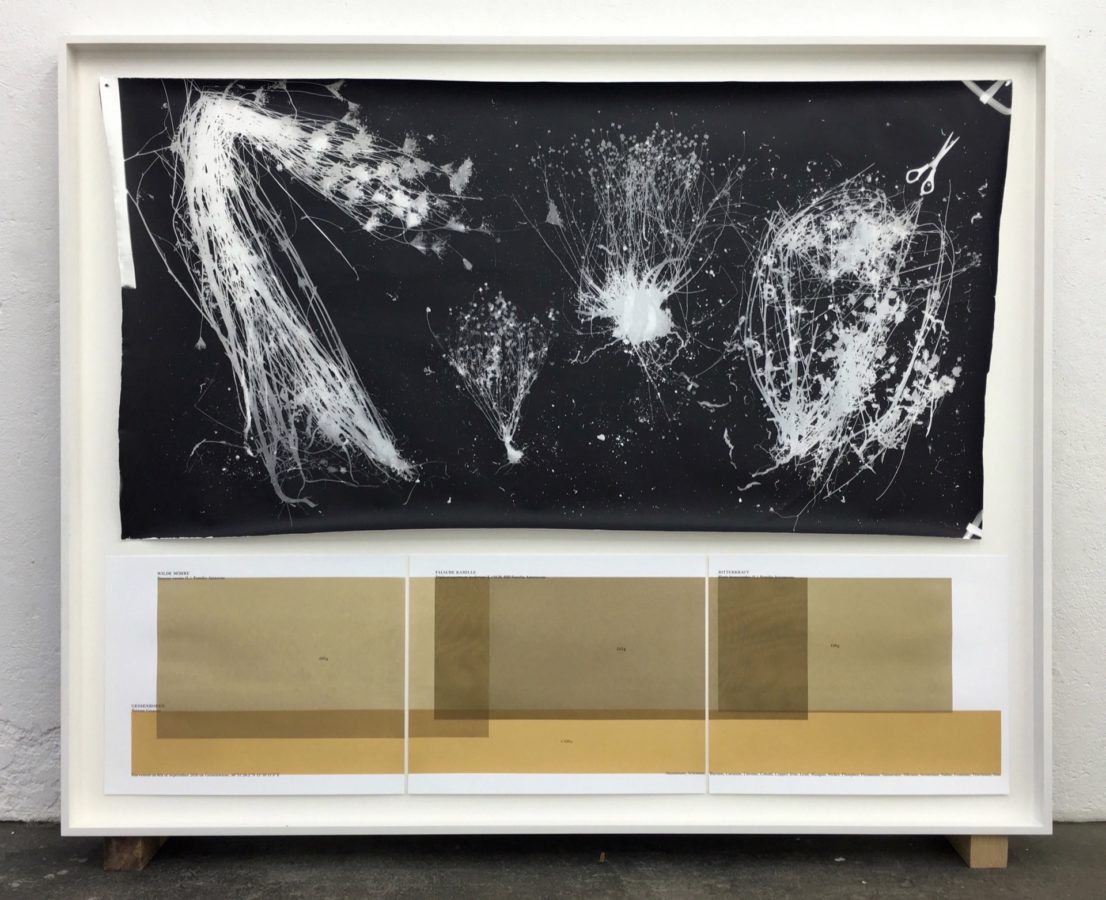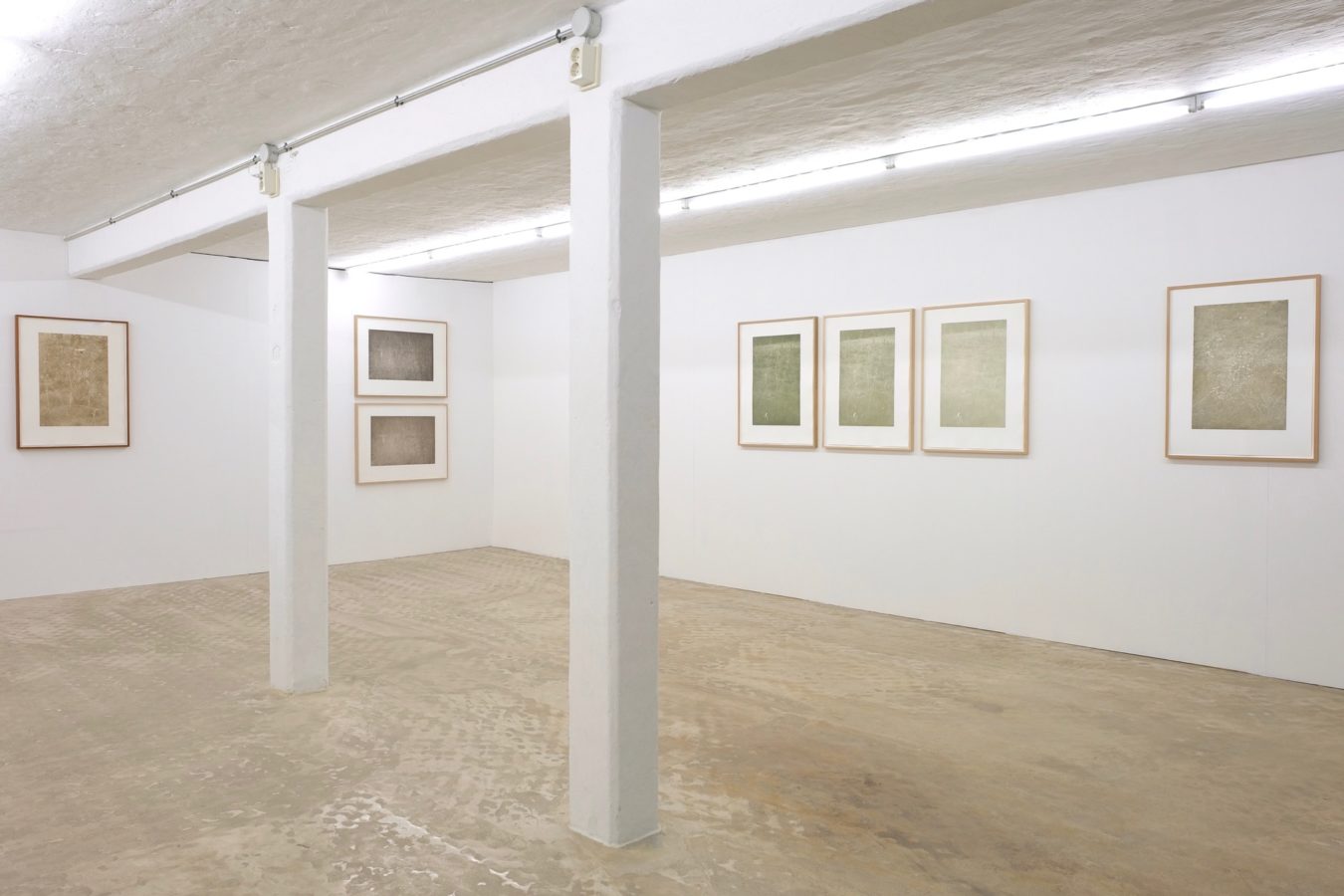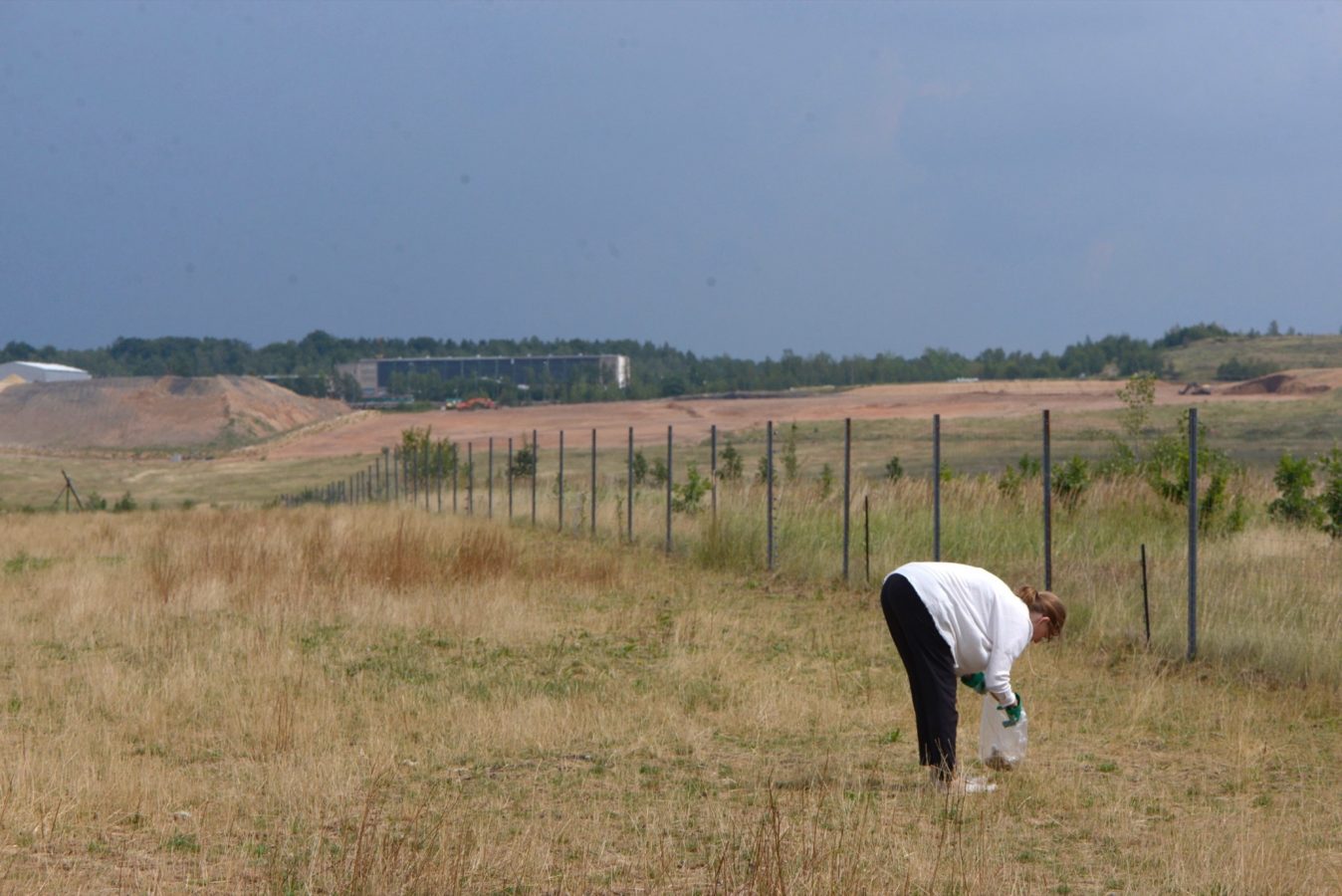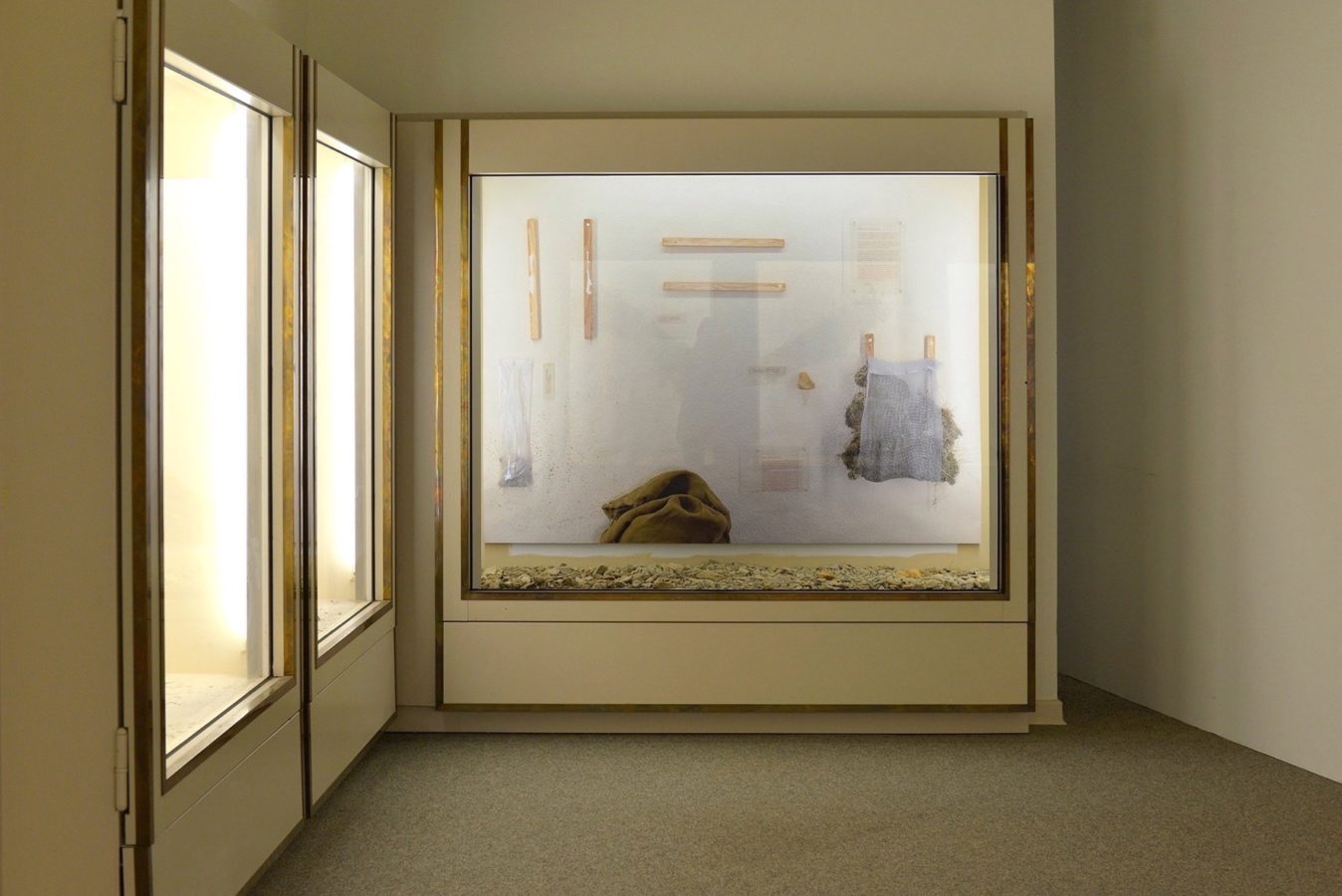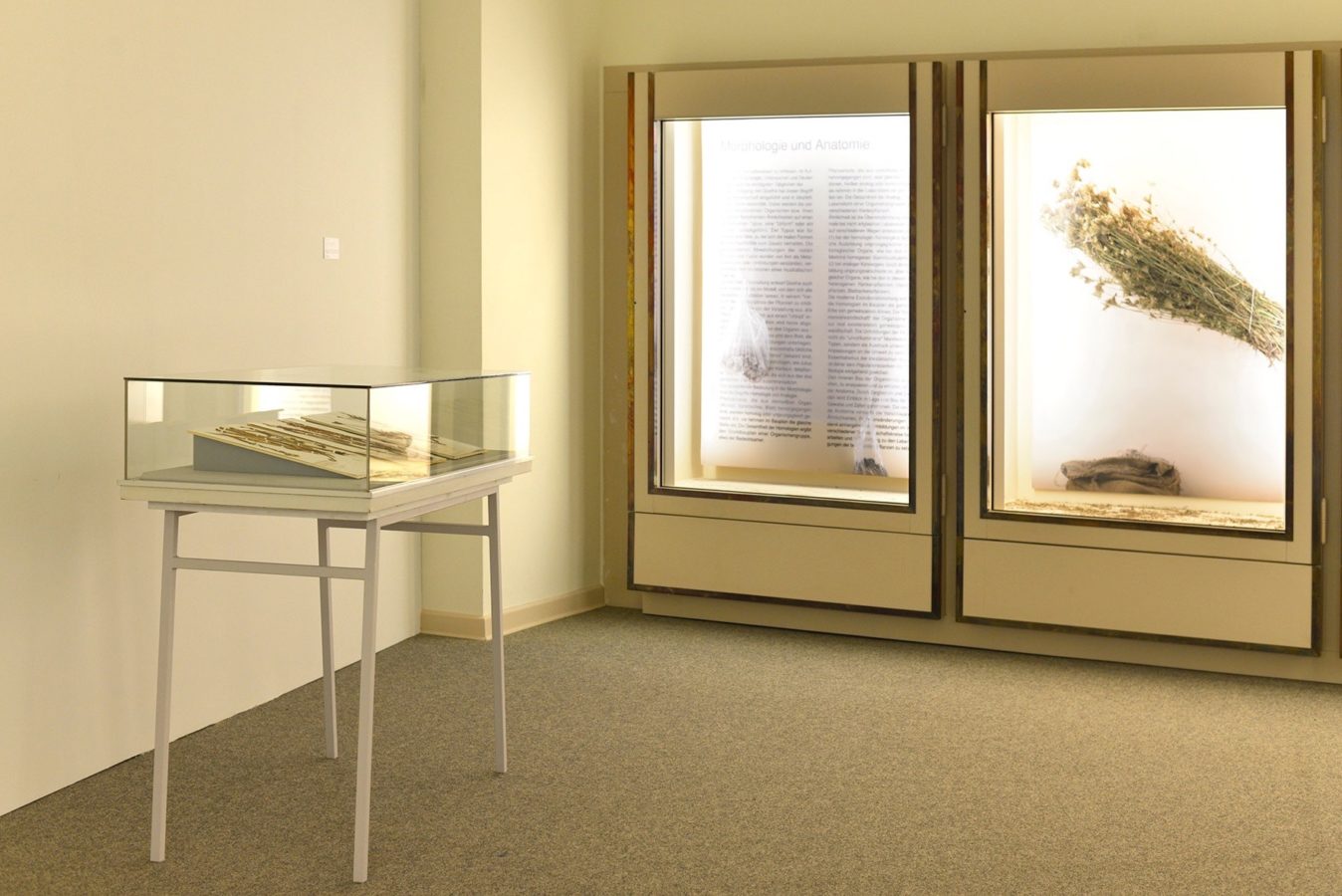Gessenwiese and Kanigsberg are former uranium mining territories in the GDR (1949–1990). Since 2016, Kriemann undertakes field research with geologists and biologists from the Friedrich Schiller University of Jena who study the accumulatation of heavy metals in plants during the re-naturalisation processes (scheduled to 2045) in the area. She identified the three herbs most capable of extracting and storing their environmental pollutants: Falsche Kamille, Wilde Möhre, and Bitterkraut (False Chamomile, Wild Carrot, Ox Tongue). Concerned with the invisibility of radioactivity, Kriemann photographed these three types of herbs and harvested the plant material afterwards. She first engaged in the production of photograms and their captions, which state the material conditions of the plants. Then she made pigments for the production of Héliogravures.
Héliogravure is the oldest procedure for reproducing photographic images. It was first invented in the early 19th century by Joseph Nicéphore Niépce and was later perfected by William Henry Fox Talbot. This gravure printing is an elaborate process which enables subtle changes in the gradation of colour. The enigma of the prints is enhanced by tinting the printing plates with pigments containing uranium and other heavy metals from the plants and herbs depicted in the images.
These continual changes to the volumes in the landscape and their afterlife are the conceptual starting point for Susanne Kriemann’s cycle “Pechblende / Library for radioactive Afterlife” (since 2014) of which the photographic series “Wild Carrot, False Chamomile, Ox Tongue” is part of.
Since radioactivity is “monstrous, because it is inaudible, invisible, odorless, and intangible, which, as Martin Repohl demonstrates, categorically alters our relationship to the world even when it is not radioactive: Now we can no longer see or determine if a fragment of the world – for example a landscape, a flower, or an apple – is toxic and deadly, or harmless and beautiful.” (1)
Over the years, Kriemann has developed a radically expanded idea of photography that investigates new systems for registering events and geological periods.
(1) Hartmut Rosa, Unverfügbarkeit, trans. A. Booth (Wien/Salzburg: Residenz Verlag, 2018)
References
...- "Looking down, looking up, turning", Cassandra Edlefsen Lasch, in Kriemann, "Ge(ssenwiese) K(anigsberg)", Spectorbooks, 2020
- "Walking through Ge(ssenwiese)", Bergit Arendt, in Kriemann, "Ge(ssenwiese) K(anigsberg)", Spectorbooks, 2020
- "Uraninight, a half life", Cia Rinne, in Kriemann, "Ge(ssenwiese) K(anigsberg)", Spectorbooks, 2020
- Esse 99, "Of Time and Contaminated Flowers", Kyveli Mavrokordopoulou, 2020
- Licht Luft Scheiße – Perspektiven auf Ökologie und Moderne Perspectives on Ecology and Modernity
- Licht Luft Scheiße – Perspektiven auf Ökologie und Moderne Perspectives on Ecology and Modernity, "Gessenwiese, Kanigsberg", 2019
- Filip, Supplement 2, "Exclusion Zones", Eva Wilson, 2017
Solo Exhibitions
...- Canopy, canopy, 2018 The Wattis CCA Curated by: Kim Nguyen
- Dying till the water runs clean, 2017 Kunstforum Baloise Curated by: Martin Schwander
- Gessenwiese, Kanigsberg, 2017 Galerie Wilfried Lentz
- Wilde Möhre, Falsche Kamille, Bitterkraut, 2016 Galerie RaebervonStenglin
Group Exhibitions
...- A spectrum of Seeing, 2023 CCA Montreal Curated by: Bas Princen, Stefano Graziani
- Mining Photography, The Ecological Footprint of Image Production, 2023 Kunst Haus Wien Curated by: Esther Ruelfs, Boaz Levin
- Mining Photography, The Ecological Footprint of Image Production, 2022 Museum für Kunst & Gewerbe Hamburg Curated by: Esther Ruelfs, Boaz Levin
- Inventing Nature, Pflanzen in der Kunst, 2021 Staatliche Kunsthalle Karlsruhe Curated by: Kristin Voigt
- Vom Leben in Industrielandschaften, 2019/20 Leopold-Hösch Museum, Düren Curated by: Anja Dorn
- Licht, Luft, Scheiße, Perspektiven auf Ökologie und Moderne, 2019 Botanisches Museum Berlin Curated by: Sandra Bartoli, Marco Clausen, Kathrin Grotz, Silvan Linden , Patricia Rahemipour, Åsa Sonjasdotter, Florian Wüst
- Zerrissene Gesellschaft. Ereignisse von langer Dauer, 2018 Centre de la photographie Genève Curated by: Anne König, Jan Wenzel
- Zerrissene Gesellschaft, 2018 F-Stop Festival Leipzig Curated by: Anne König, Jan Wenzel
